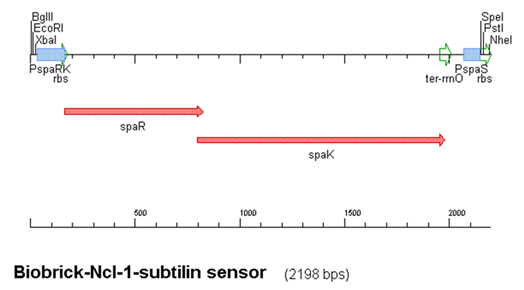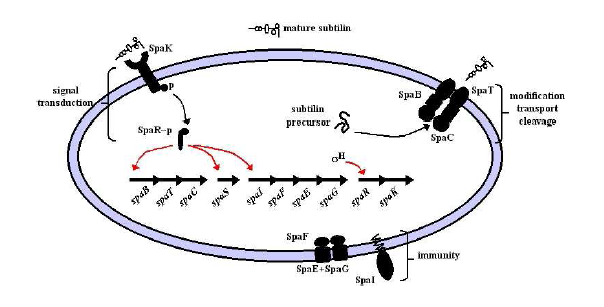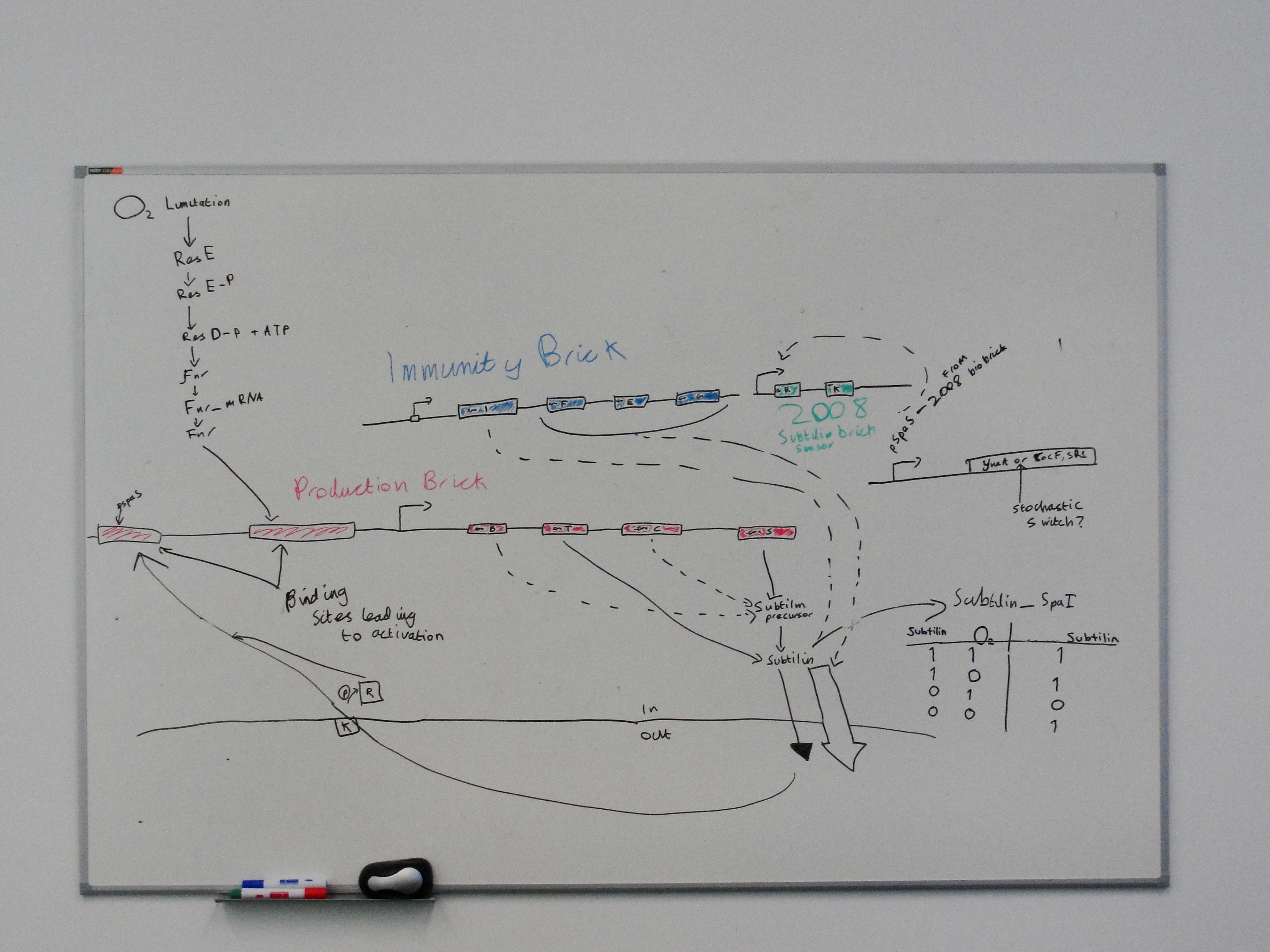Team:Newcastle/End of crack & signalling system
From 2010.igem.org
RachelBoyd (Talk | contribs) (→Subtilin production BioBrick) |
RachelBoyd (Talk | contribs) (→Subtilin production BioBrick) |
||
| Line 53: | Line 53: | ||
==Subtilin production BioBrick== | ==Subtilin production BioBrick== | ||
| - | [[Image:Subtilin_production.png]] | + | [[Image:Subtilin_production.png|700px]] |
==Biochemical pathway== | ==Biochemical pathway== | ||
Revision as of 14:49, 13 August 2010

| |||||||||||||
| |||||||||||||
Contents |
End of crack cell-signalling system
We aim to use a subtilin-based cell signalling system to trigger calcium carbonate precipitation and filament formation once our bacteria have reached a sufficient density inside a microcrack.
Subtilin is a lantibiotic peptide produced naturally by Bacillus subtilis ATCC 6633 but not by Bacillus subtilis 168. We aim to produce two BioBricks: one for production of subtilin, and, since subtilin is a lantibiotic, one for subtilin immunity. A subtilin-sensing BioBrick was produced by Newcastle's 2008 iGEM team.
Research
2008 Subtilin-sensing BioBrick
- A type 1 antimicrobial peptide [AMP] or lantibiotic produced by B. subtilis
- NB. Lantibiotic = peptide-derived antibiotics with high antimicrobial activity against various Gram-positive bacteria, including pathogenic bacteria such as propionibacteria, staphylococci, clostridia, enterococci and streptococci.
- NB. Subtilin not same as Subtilisin!!!!!
- Production of subtilin involves the spa gene cluster encompassing 10 genes, spaBTCSIFEGRK
The construct above contains:
- spaRK promotor
- spaR (subtilin peptide antibiotic Regulation) - the 220 amino acid product of this gene usually regulates the downstream production of subtilin antibiotic. It has an N-terminal domain that can be phosphorylated and a C-terminal domian that has DNA binding properties [http://www.sciencedirect.com/science?_ob=ArticleURL&_udi=B6T0M-4D4XNMM-4&_user=224739&_coverDate=09%2F01%2F2004&_rdoc=1&_fmt=high&_orig=search&_sort=d&_docanchor=&view=c&_acct=C000014659&_version=1&_urlVersion=0&_userid=224739&md5=1f421f180a48e2d68b86da579cc7f920|1]
- spaK (subtilin peptide antibiotic Kinase) - this gene codes for a 325 amino acid histadine kinase peptide that phosphorylates the N-terminus of SpaR [http://www.sciencedirect.com/science?_ob=ArticleURL&_udi=B6T0M-4D5KTFV-1&_user=224739&_coverDate=09%2F01%2F2004&_rdoc=1&_fmt=high&_orig=search&_sort=d&_docanchor=&view=c&_acct=C000014659&_version=1&_urlVersion=0&_userid=224739&md5=8d450f455463638579798872811ae5c0|2]. This activates the DNA binding ability of the C-terminus of SpaR, which in turn initiates transcription of the downstream gene. In the case of our construct, this gene is gfp.
- rrnO transcriptional terminator
- spaS promotor - a strong promotor inducible by upstream activation of spaRK. It can be placed in front any gene to regulate its activity.
Production and Immunity Bricks
- spaBTCS genes are required for production.
- spaIFEG genes are required for immunity.
- spaB and C are modifiers of the subtilin precursor.
- spaT is a transporter.
- spaS is the gene coding for the subtilin precursor peptide.
- spaI 's gene product sequesters subtilin.
- spaFEG genes code for transporters.
Image from Modeling Subtilin production in Bacillus subtilis Using Stochastic Hybrid Systems. Hu et al.
Cloning Strategy
Subtilin immunity BioBrick
The spaIFEG gene cluster encodes two separate subtilin immunity systems, both present in ATCC 6633. Together they provide a high degree of subtilin resistance.
Subtilin production BioBrick
Biochemical pathway
 
|
 "
"




